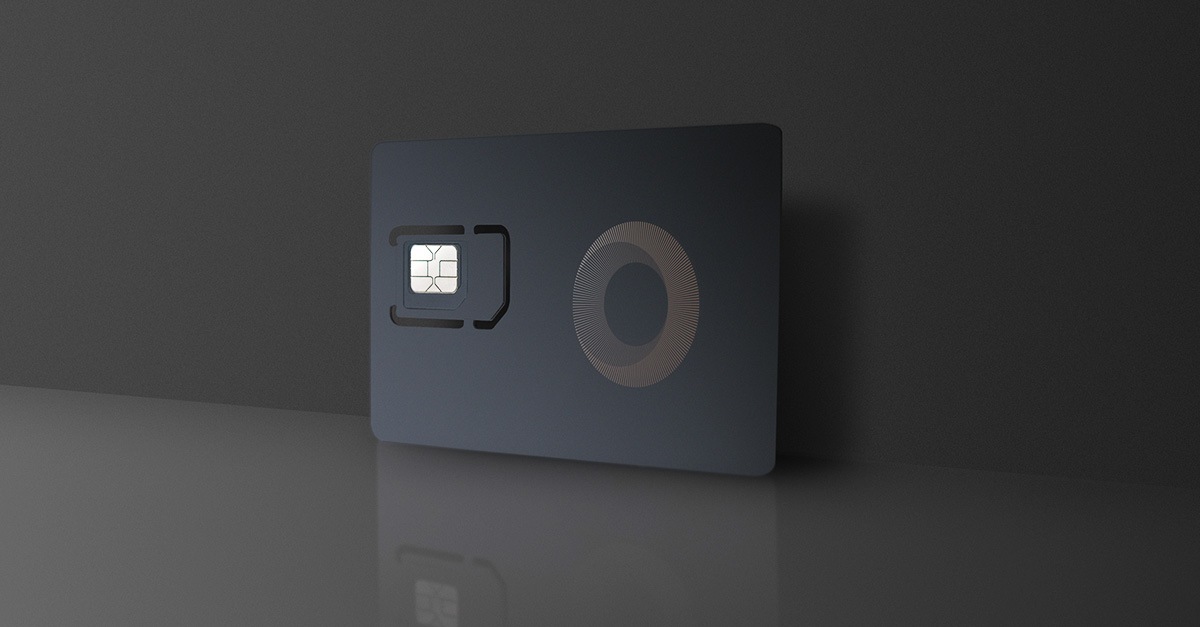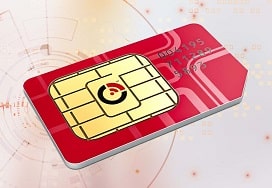Remote Monitoring Using Iot Solutions for Remote Asset Monitoring
Iot Remote Monitoring And Control Benefits of IoT Remote Monitoring

The emergence of Internet of Things (IoT) connectivity has revolutionized numerous industries, including transportation. One of the most impactful applications is in vehicle monitoring methods, which merge traditional GPS expertise with superior IoT capabilities. This synergy enhances visibility and offers a comprehensive understanding of car actions in real-time.
IoT connectivity enables seamless communication between vehicles and monitoring methods. By equipping vehicles with IoT gadgets, companies can gather essential knowledge points corresponding to location, velocity, fuel consumption, and even engine health. This real-time information could be monitored remotely, allowing fleet managers to make knowledgeable selections rapidly. Not solely does this improve operational effectivity, however it also promotes security and reliability in transportation.
Moreover, the appliance of IoT in vehicle monitoring can considerably reduce operational prices. Businesses can optimize their routes based on real-time site visitors circumstances, guaranteeing well timed deliveries and reducing gas expenses. The capacity to watch vehicle health can even preemptively determine maintenance wants, thus avoiding the costs related to breakdowns and emergency repairs.
Role Of Smart Sensors In Iot What is IoT Remote Monitoring?
Security is one other critical benefit supplied by IoT connectivity in vehicle tracking techniques. Advanced monitoring allows for swift responses to incidents such as theft or unauthorized use. In the unfortunate occasion of a vehicle being stolen, monitoring devices can provide real-time updates to legislation enforcement, drastically increasing the chances of recovery. This built-in security layer not only protects belongings but also provides peace of mind to fleet homeowners.

Integration with different IoT devices can additional amplify the advantages of vehicle monitoring techniques. For occasion, wearables for drivers can monitor their health conditions and alert administration about fatigue or different issues. This holistic strategy ensures that both vehicle and driver security are prioritized. With the mix of assorted IoT devices, organizations can create a safer and more efficient work environment.
Remote Monitoring Solutions Top Monitoring Tools for IoT Devices
Data analytics turns into a game-changer when utilized to the information harvested from IoT-connected vehicle monitoring techniques. Organizations have the opportunity to generate insights from trends in driver conduct, vehicle performance, and even gasoline consumption patterns. This level of study not solely facilitates higher resource management but in addition informs strategic planning shifting ahead.
Another important advantage of IoT connectivity in vehicle tracking is the enhancement of customer support. By providing reside updates to customers about the status of their deliveries, corporations can foster transparency and belief. Knowing when to count on their shipments boosts customer satisfaction and can lead to repeat business, an important element in a aggressive market.
The scalability of IoT options can be noteworthy. As a business grows and its fleet expands, integrating new vehicles into an existing tracking system is relatively straightforward. This adaptability allows companies to reply successfully to changes in demand and operational requirements with out overhauling their whole infrastructure.
Role Of Smart Sensors In Iot Applications of IoT Remote Monitoring
The global push for sustainability has additional fueled the adoption of IoT in vehicle monitoring systems. Organizations can monitor their carbon footprints by analyzing vehicle emissions and gasoline consumption patterns. Through this information, they can implement sustainable practices, similar to eco-friendly routing, thereby contributing to a extra sustainable future. Iot Remote Monitoring And Control.
However, the implementation of IoT connectivity for vehicle tracking systems isn't with out its challenges. Concerns concerning information privateness and cybersecurity are at the forefront. Companies must put cash into robust safety measures to protect delicate data and ensure compliance with regulations. The stakes are excessive; any breach could have severe consequences not just for the company but additionally for its customers and stakeholders.
Vendors providing IoT solutions must prioritize the event of safe platforms whereas sustaining user-friendly interfaces. This steadiness is essential for gaining widespread acceptance of those technologies within the transportation sector. The advice more accessible and safe these techniques are, the more likely organizations will undertake them.
The way forward for IoT connectivity in vehicle tracking methods looks promising. As technologies continue to evolve, improvements similar to edge computing and advanced AI algorithms will additional improve the capabilities of those methods. These developments will result in smarter, more intuitive vehicle tracking solutions that can analyze data and make choices in real-time, thereby reducing the need for human intervention.
Remote Iot Monitoring Solution Cost Savings from IoT Remote Monitoring
As autonomous autos gain traction, the integration of IoT in vehicle tracking methods turns into even more essential. These vehicles rely on superior connectivity to navigate safely and effectively. The insights gained from current vehicle monitoring systems can inform the development of more refined algorithms, finally enhancing the performance of autonomous fleets.
Investing in IoT connectivity for vehicle tracking methods also encourages collaboration across various sectors. Logistics corporations, automotive manufacturers, and technology providers can work together to create comprehensive options that address common challenges. This collaborative approach is important for driving innovation and guaranteeing the long-term success of IoT functions in transportation.

Understanding the broader implications of IoT connectivity in vehicle tracking helps in shaping future insurance policies and regulations. Stakeholders should engage in dialogues surrounding greatest practices, information security, and sustainability to pave the way for a data-driven environment. Such discussions can foster an ecosystem where know-how advantages not simply businesses, but society as a complete.
In conclusion, IoT connectivity for vehicle monitoring systems stands as a transformative drive within the transportation industry. Its myriad advantages, from operational efficiency and cost reduction to enhanced safety and buyer satisfaction, make it an essential tool for modern companies. The challenges faced, notably in areas like information privateness and cybersecurity, i was reading this must be addressed through concerted efforts from all stakeholders. As the know-how continues to evolve, the collective objective must be to harness its potential for creating safer, extra efficient, and sustainable transportation solutions.
Remote Monitoring Solutions Smart City Monitoring Solutions with IoT
- Enhanced real-time knowledge transmission permits continuous monitoring of auto locations, enhancing route optimization and security.

- Integration with superior GPS know-how permits for precise coordinates, reducing the chance of misrouting or vehicle loss.
Remote Monitoring Definition of IoT Remote Monitoring
- Use of cellular, satellite tv for pc, and LPWAN networks presents versatile connectivity choices relying on geographic areas and necessities.
- Data analytics supplied by IoT connectivity helps predictive maintenance, alerting homeowners to potential mechanical points earlier than they turn into important.
- Iot Global
Remote Iot Monitoring Solution Gateway for Medical Device Monitoring
- Geofencing capabilities allow for automated alerts when automobiles enter or exit predefined areas, enhancing safety and operational effectivity.
- Cloud-based platforms provide seamless information storage and accessibility, permitting fleet managers to review historical information from anyplace.
- Integration with cellular functions facilitates user-friendly interfaces for both drivers and fleet managers to track and handle vehicles effectively.
- Real-time alerts and notifications improve response occasions throughout emergencies, offering instant assistance primarily based on vehicle status.
Iot Revolution Technologies Gateway for Medical Device Monitoring
- Interoperability with different IoT units can improve vehicle tracking systems, allowing for complete fleet administration strategies.
- Sustainable practices could be supported via IoT connectivity by optimizing routes and lowering fuel consumption, contributing to environmental objectives.
What is IoT connectivity in vehicle monitoring systems?undefinedIoT connectivity refers to the integration of Internet of Things technology in vehicle tracking techniques, allowing autos to communicate in actual time with a central server or application. This enables environment friendly monitoring, information collection, and analysis to enhance fleet management and vehicle safety.
Remote Monitoring Solutions Guide to Real-Time IoT Monitoring
How does IoT improve the accuracy of car tracking?undefinedIoT enhances accuracy by using GPS sensors, accelerometers, and different technologies embedded in autos. This knowledge is shipped through IoT networks for real-time processing, providing exact location, pace, and behavioral insights that enhance tracking reliability.
What are the benefits of using IoT in vehicle tracking systems?undefinedThe benefits embody real-time visibility of auto places, improved route optimization, decreased operational prices, enhanced safety through monitoring driver conduct, and improved customer service via reliable supply estimates.
Iot Remote Asset Monitoring Solution Guide to Real-Time IoT Monitoring
Are there any privacy issues associated with IoT vehicle tracking?undefinedYes, privacy considerations exist, notably concerning data assortment and utilization. Implementing strong knowledge protection measures and allowing users to control their information can help mitigate these considerations and guarantee compliance with privacy rules.
What kinds of IoT connectivity options can be found for vehicle tracking systems?undefinedCommon IoT connectivity options embrace cellular networks (4G, 5G), satellite communication, Wi-Fi, and LoRaWAN. Each possibility has its advantages and is chosen based mostly on protection, value, and particular use case requirements.
How safe is IoT connectivity for vehicle tracking systems?undefinedSecurity varies by implementation; nonetheless, reputable suppliers use encryption, safe knowledge transmission protocols, and common software updates to protect in opposition to unauthorized access and knowledge breaches.
Can IoT vehicle monitoring systems present predictive maintenance alerts?undefinedYes, IoT vehicle tracking methods can analyze information from vehicle sensors to predict when maintenance is needed, lowering downtime and preventing larger, expensive repairs through timely interventions.
Iot Remote Monitoring And Control Importance of Industrial Remote Monitoring
What is the position of AI in enhancing IoT vehicle tracking systems?undefinedAI performs a critical function by analyzing vast quantities of information collected via IoT systems to determine patterns, predict driver behaviors, optimize routes, and enhance total decision-making for fleet management.
How user-friendly are IoT vehicle monitoring applications?undefinedMost IoT vehicle tracking functions are designed with user expertise in mind, that includes intuitive interfaces and dashboards. User training and help improve adoption and efficient use of the system capabilities.